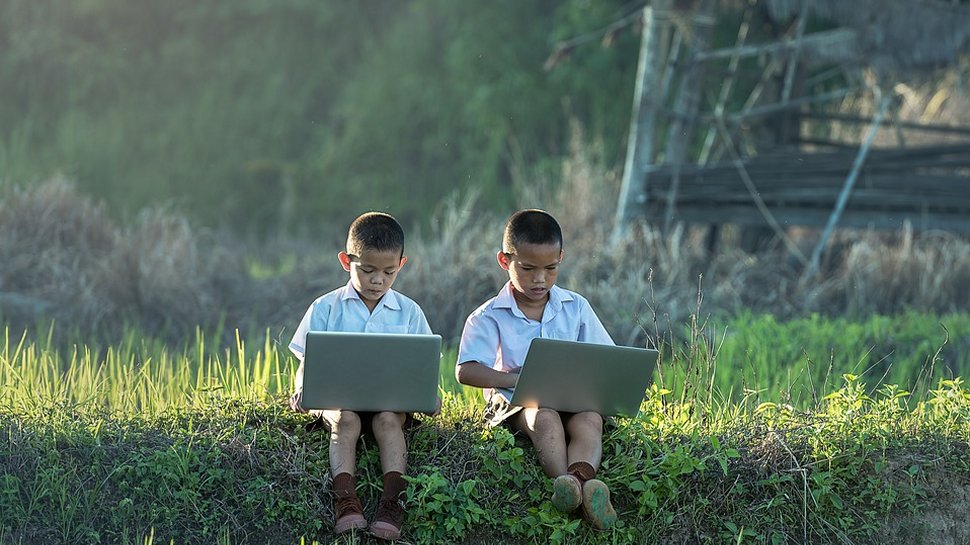10 essential resources to help parents safeguard their kids online
The internet has many benefits for kids, but also many risks

TechRadar created this content as part of a paid partnership with Bark. The contents of this article are entirely independent and solely reflect the editorial opinion of TechRadar.
Kids are now more online than ever. The internet has many benefits for kids, e.g., online education, but also many risks. It’s necessary that parents help their kids stay safe online because children aren’t sophisticated enough to understand the potential troubles of the internet. This article will list ten essential resources to help you safeguard your kids online.
1. Discuss internet safety with them
The first step to keeping your kids online involves you as a parent communicating with them. Educate your kids about the potential dangers of the internet and why restrictions are needed. Tell them about common risks like cyberbullying, phishing, and data theft. They might not understand these risks in detail, but at least they’ll be aware of their existence.
Building trust with your kids and encouraging them to report any suspicions to you is necessary. This way, they can tell you things even when inconvenient. The first resource for safeguarding kids is you as a human.
Bark: Best Parental Control for Customization
Techradar editors praise the service for its custom controls, "smarter-than-most" app content filtering, as well as SMS and email monitoring. See here for details on Bark's phones and pricing plans.
Preferred partner (What does this mean?)
2. Parental control apps
Many parental control apps let parents restrict their child’s online activities. For example, you can set a screen time limit for their device, and it automatically locks once the allotted time is up. You can also block specific categories of websites, such as gambling and adult content. These tools maintain large blocklists that keep getting updated, so you can be assured of minimal exposure to harmful content.
A good parental control app will allow you to monitor your child's browsing history remotely. If you notice any suspicious website, you can simply block it at the click of a button. These apps also enable remote app management so your child can not download any app without your consent. Likewise, you can use it to track your kids’ location to ensure they’re safe while outside the home.
3. Password manager
You can use a family password manager to help kids manage their online accounts. They aren’t usually sophisticated enough to ensure their accounts are safe, so the parent is responsible. With a password manager, your kid won’t forget the details needed to log into their account. This will ensure their identity doesn’t get stolen and misused.
Sign up to the TechRadar Pro newsletter to get all the top news, opinion, features and guidance your business needs to succeed!
You don't need technical skills to use a password manager. A good one should be easy to use and navigate for even a layman. It should also have family-sharing features so that one subscription can cover you and your kids.
4. Disable location tracking
Many apps abuse and misuse user data. They collect location data in bulk and sell it to advertisers or, in some cases, malicious actors. Disabling location tracking for all apps on your child’s device is advisable. The exception can be for a parental control app that you use to monitor their location.
The good thing is that most devices allow you to disable location tracking in a few steps. This is more prominent with smartphones that we carry everywhere and not desktops that tend to remain stationary.
5. Monitor their social media
Social media has some benefits, e.g., it can help kids stay in touch with friends. However, social media comes with many risks. An unethical person could attempt to contact your kid and take advantage of them. Social media platforms are also rife with misinformation designed to trick unsuspecting kids into doing harmful things.
Many experts advise that kids should stay away from social media altogether. If you want to allow that, it’s fine, but it must be under supervision. Monitor who your children are talking to. Make their accounts private so that they can’t be contacted by strangers. Besides, you can limit their use to kid-friendly platforms such as Messenger Kids. Mainstream social sites like TikTok and Reddit are for adults, not kids.
6. Screen time app
Dedicated screen time apps enable you to monitor your kid's phone use. For example, an iPhone come with an in-built Screen Time tool that gives you weekly reports on your children's activity and lets you set limits on their use. Android phones have similar tools you can use to keep your kids safe online. If yours does not have an in-built screen time feature, you can always download a trusted one from the Google Play Store.
7. Purchase confirmation
Kids enjoy playing games online and having fun. But, some game developers are dishonest and implement “dark patterns” to entice them to pay real money for unnecessary features. For example, they’ll make a game level too difficult and require a paid upgrade to pass it.
There’s nothing wrong with playing games, but you have to be careful to prevent kids from spending your money on unnecessary stuff. Enable Purchase Confirmation in the Google Play Store or the equivalent in the App Store to prevent any purchase from going through without your explicit approval.
8. SafeSearch
SafeSearch is a tool offered by Google, the world’s most popular search engine. It filters out explicit content whenever your kids search for something on Google, e.g., images that display violence and pornography. It isn’t 100% accurate but is pretty good at its job.
SafeSearch only works for Google search results; it doesn't affect what your child sees on other search engines. However, the good thing is that many other search engines offer a similar tool.
9. Web Browser Filtering
You can filter content directly from a web browser. You can block specific URLs you don’t want your kids to access. If they try to access a blocked URL, it wouldn’t resolve. Sometimes, you can block entire categories of sites known for hosting harmful content.
Most web browsers come with ready-made content-filtering tools. But, you’ll likely need to download a browser extension for more advanced features, such as category-wide blocking.
10. Wi-Fi router management
You can monitor your kids’ online activities directly from your Wi-Fi router. It can show your kids’ browsing history, including sites accessed in incognito mode. You can also set time limits directly from the router; the connection automatically disconnects once the time is up. The drawback is that you need to have technical knowledge to use this method.
Stefan has always been a lover of tech. He graduated with an MSc in geological engineering but soon discovered he had a knack for writing instead. So he decided to combine his newfound and life-long passions to become a technology writer. As a freelance content writer, Stefan can break down complex technological topics, making them easily digestible for the lay audience.

